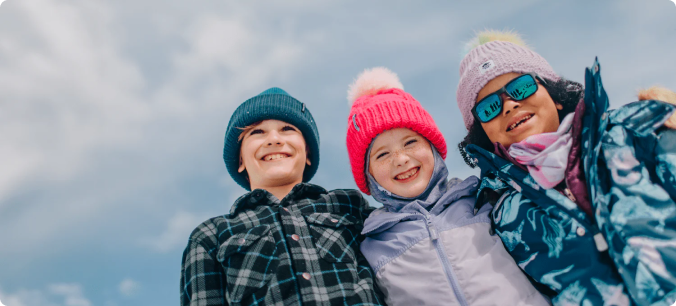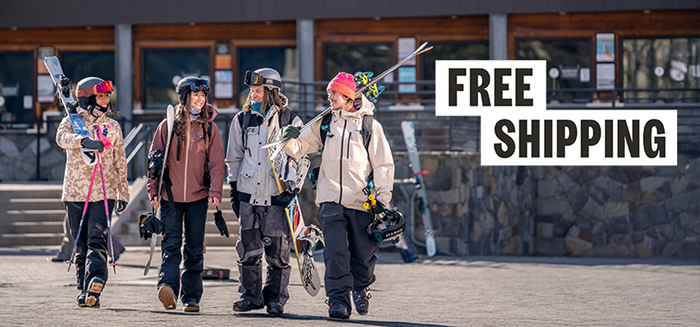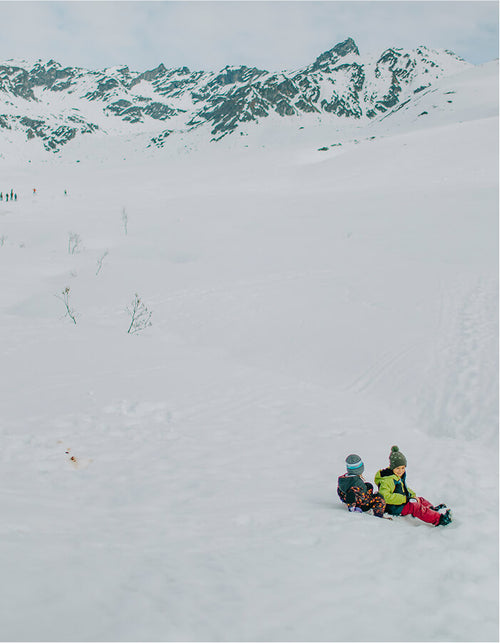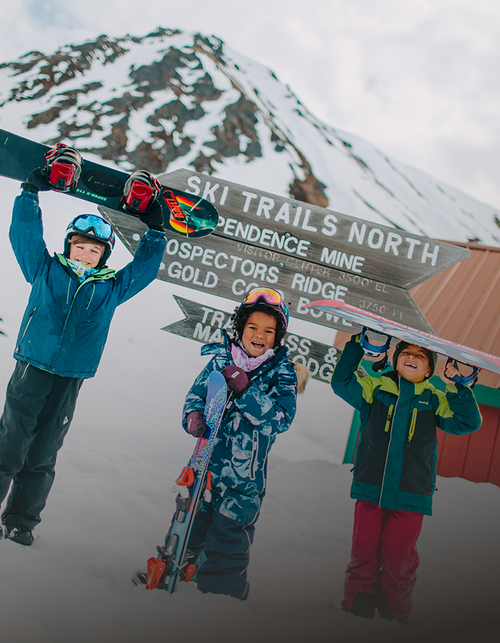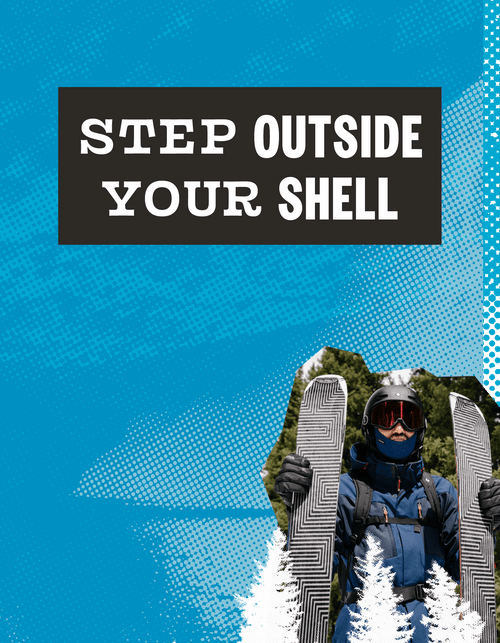How to Raise Your Kids to be "Fearless"
- By Kristen Ulmer
I’m a fear expert, who has a modern approach to fear that likely you’ve never considered before.
Namely, I see fear not as an enemy or a hinderance that holds us back, but rather a friend and asset helping us come alive and bring our A game to everything that we do.
I also see that when choosing to do scary things (like when pushing ourselves skiing, in school, in relationships or in career), it’s a sign you’re stepping out of your comfort zone and thus on the right track toward learning something new.
If it’s anything but these things for your child, pay attention and let’s turn this around.

When I work with adults who have a fear or anxiety issue in any aspect of their lives, we can always trace the origination point back to this:
If you learned early on, from a parent, teacher, influencer, or society in general, that fear is a bad thing, this leads to inevitable issues with fear and anxiety.
It works like this: the first time a child, maybe when skiing for the first time, says “I’m afraid,” if they’re met with “there’s nothing to be afraid of” or ‘don’t let fear hold you back,” this is the starting point leading to inevitable issues.
I call it Fear Shaming, and it’s rampant in society. It’s any kind of message that it’s not normal to, or that it’s not ok to, feel fear.
While well meaning, what Fear Shaming does is suggest that fear isn’t real, which it most certainly is, or that it’s something to be ashamed of, which it most certainly is not. This sets that child up for a lifetime of struggle because everyone feels fear. And it’s perfectly normal and natural to feel it. In fact, it’s with us nearly every moment of every day, whether we’re skiers or not.
Let’s break down why Fear Shaming leads to inevitable issues, including more fear and anxiety, not less. Then we’ll explore what to do instead, including how to speak to your child in a more progressive way so they don’t develop these issues.
Our goal being, to set them up for the best chance to thrive out there not despite the inevitability of fear, but because of the fear.
If you Fear Shame them, here are some of the most common issues that could develop in your child:
- In order to gain your approval and ‘get rid’ of fear in accordance to society expectations, they may start fighting it, causing them to be at war with themselves. This manifests as hating themselves.
- Which leads to ongoing self-esteem issues. If every time they feel fear, which we all do-- all the time, they’ll feel like there’s something wrong with them, all the time.
- If they try to control fear, which is as hard as trying to control your heartbeat, they’ll feel like failures and feel out of control.
- If they try to block out fear, it may show up re-directed as anger or even rage instead. After all, they have to feel something, and anger feels more acceptable, especially with boys for whom fear is considered a weakness.
- They may feel excessive sadness instead. If fear is not allowed and anger is also not welcomed, this may become their only option, i.e., they may even cry at the prospect of going skiing.
- To avoid feeling fear, they may avoid doing scary things. If you don’t do the scary thing then you don’t have to feel or deal with fear, right?
- They may learn to ignore fear, which works temporarily to lesson fear, for about 10 years tops. Maybe you’ve heard the common Carl Jung saying though, “whatever you resist, persists”? This leads to fear coming back later with a vengeance in the form of an anxiety disorder, panic attacks. PTSD or more.
- It may also show up as irrational fear. If you ignore fear in one area of your life it will triple elsewhere in a re-directed way.

The list goes on and on, but bottom line? Fear Shaming is the worst thing you can do to a child, because it takes them out of flow with their emotions and puts them at war with them instead. Leading to their being at war with themselves and at war with life itself.
Conversely, turning around Fear Shaming and doing the opposite, which is Fear Honoring, this action will be the greatest gift you can give them. Not only will it ignite a more positive message about fear, which leads to less fear, but it’ll help them thrive emotionally, psychologically and spiritually throughout their whole lives.
Here’s what to say to your child instead, which is the opposite of Fear Shaming. You ready?
The next time your kid says, ‘I’m afraid,’ your job is to say one of the following things:
Life is scary, isn’t it?
Or, what does it feel like to be afraid?
Here’s an example.
I had a client who took his son skiing. The boy was afraid to go on the steeper slopes, saying “It’s scary!” Prior to learning these simple language shifts, the dad would say things like ‘It’s not scar.” or, “you’re a great skier, there’s no need to be afraid,” which is indeed, Fear Shaming.
Here’s what he could say instead: “yes, skiing is very scary,” which of course, it is. He could continue with, “sometimes we like to do scary things though- because the fear can make skiing more fun and exciting!”
Now, if his son responds by saying something like, “but I don’t like feeling fear,” which is what he’ll likely say if he’s ever been given the message in the past that fear is not a good thing, here’s a great next reponse:
“Yep, sometimes, I also don’t like feeling fear. We’re not always in the mood for fear, are we?”
This could be followed by an inquiry, “Are you in the mood for fear right now?” The child may respond, “I’m not in the mood for fear.” In which case the dad can finish with, “ok, let’s go ski something not scary, and let me know when you’re in the mood for fear, then we’ll come back to this steeper slope.”

Taking it a step further, let me leave you with one last opportunity to teach your child how to have a healthy, positive relationship with fear. Which is accomplished by helping him feel it, versus thinking about it.
We’re so in the habit of dealing with emotions intellectually, like they’re a math equation that need to be solved. Instead, teach your child to deal with his emotions, emotionally, by teaching him how to feel his fear.
You see, fear isn’t in your mind. Proven by science, it’s a feeling of discomfort in your body. In order to keep his son in his body and not his mind then, the dad might ask him at the top of that steep slope: “how does it feel to be scared right now?” or, “let’s stand here and feel scared together” then stay silent for a bit.
What happens then, as they stand together feeling it rather than talking or thinking about it --all the while (very important) not trying to get rid of it in any way—it’ll actually run its course rather quickly.
Fear as a feeling (also proven by science), if you just let it be, will usually stuck around no more than 10-90 seconds before letting go of you. And voila, very quickly your child will feel less fear, and then be more interested and ready to get on the steeper slope. And enjoy his fear while doing so, while it helps him bring his A game to the skiing.

So, that’s it. In conclusion, consider the child who seems to be fearless.
Look again, and you’ll see that that child isn’t fearless at all. What’s happening is, that child enjoys feeling fear, thus it doesn’t feel like fear but rather excitement or a sense of aliveness.
That’s what you’re aiming for.
So anything you can do to shift your language so that fear is perceived as a good thing --not something to be fought or let go of but rather to be felt and savored-- that’s how you know you’re on the right track.
This kind of shift with your kid will work wonders for them but also be a gift you give yourself. Especially if you yourself struggle with anxiety or any of the other issues I mentioned.
Rooting for you.

